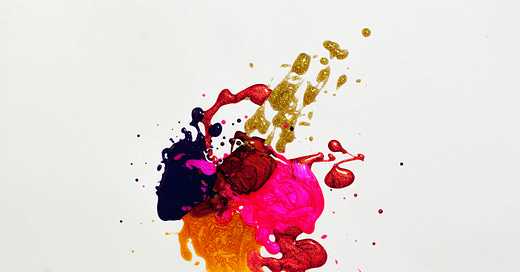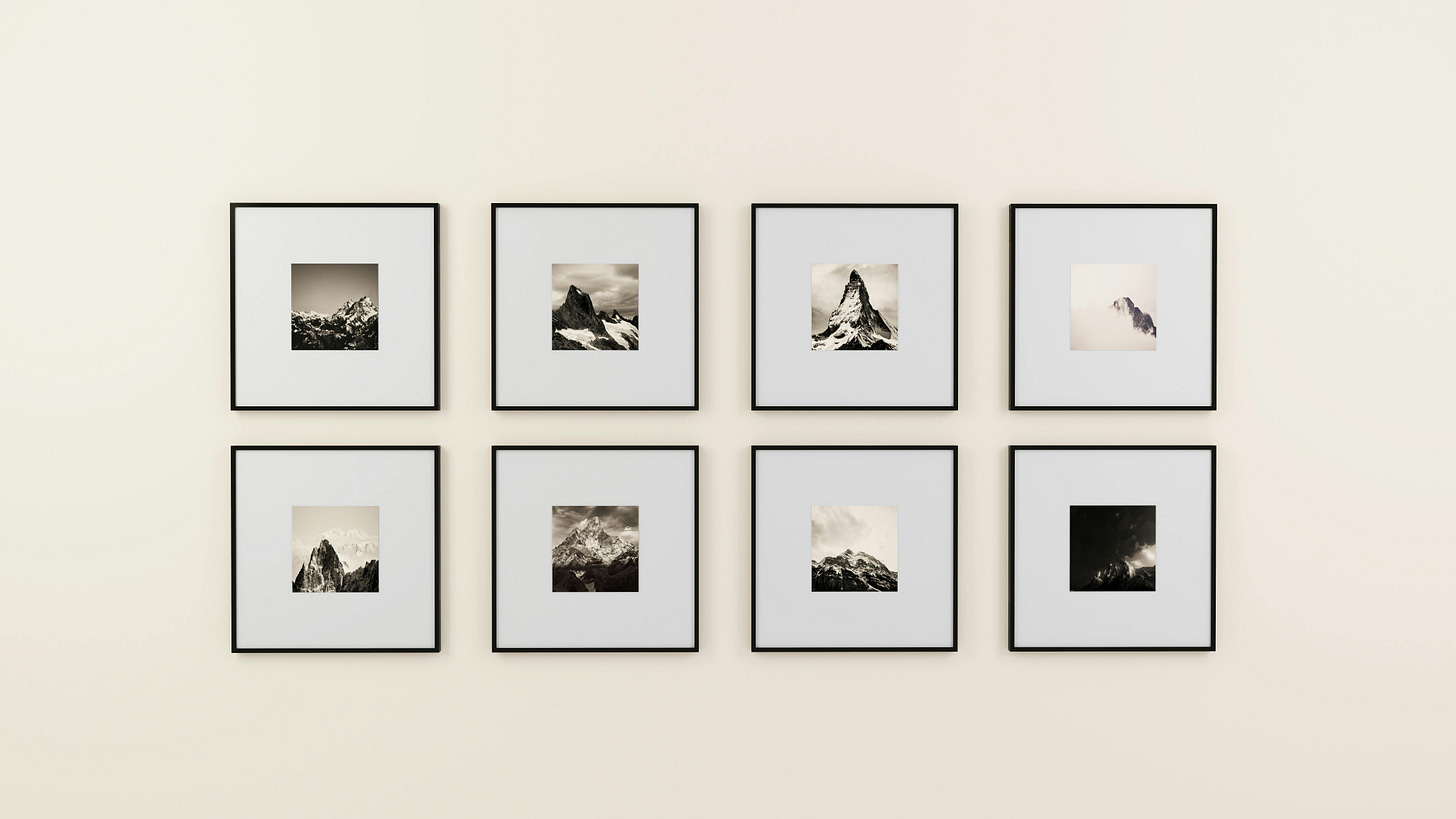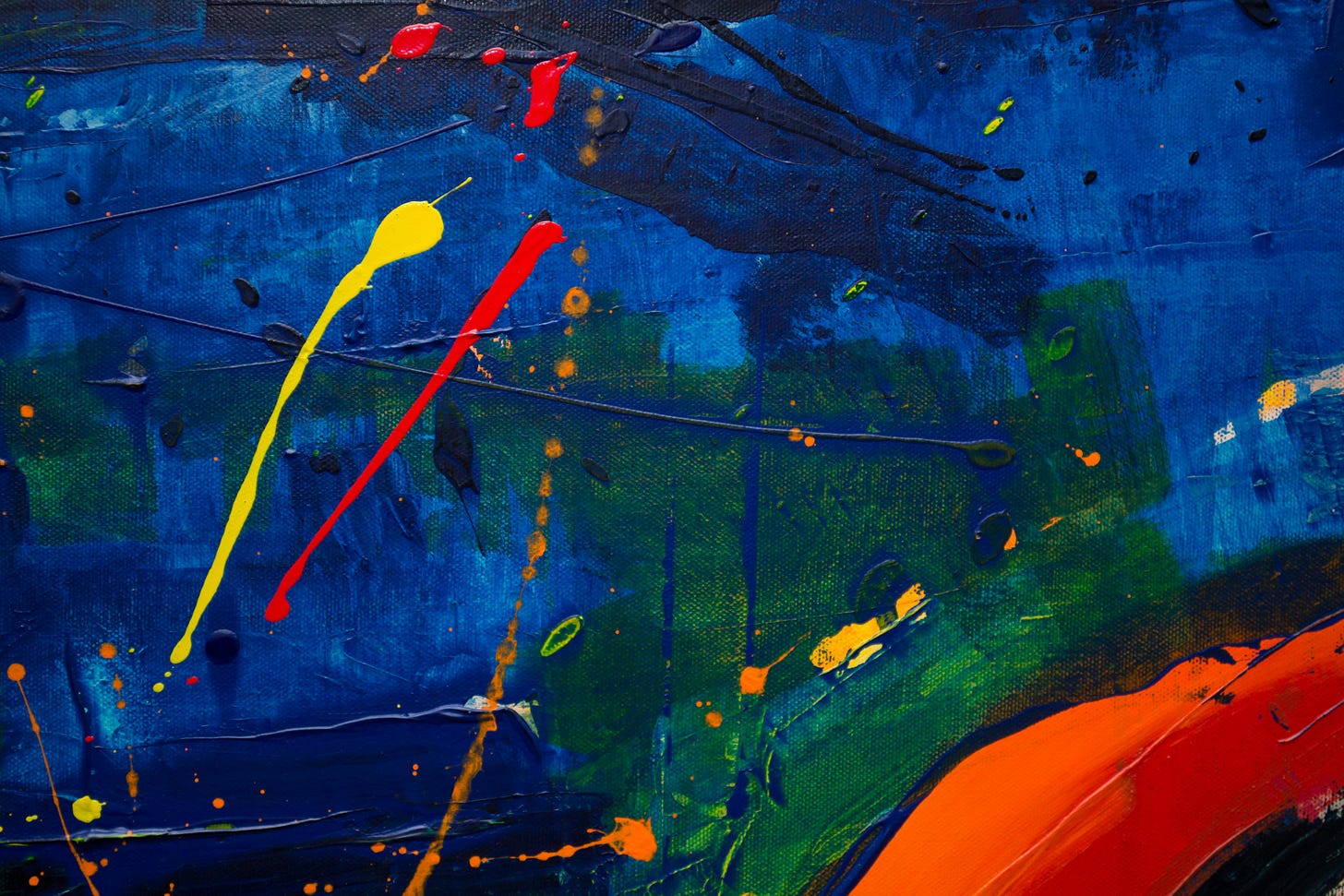Photo by Dan Cristian Pădureț: https://www.pexels.com/photo/photo-of-multicolored-abstract-painting-1193743/
Introduction
“Ghost in the Shell” (Takkyu Ishino, 1997)
To me, Denki Groove was always an avant-garde and eccentric presence. So, when Takkyu Ishino was chosen to create the theme song for a PlayStation game, I was surprised. However, upon hearing the track, I immediately understood why he had been selected.
Photo by Medhat Ayad: https://www.pexels.com/photo/assorted-paintings-383568/
1. The Evolution of Western Art
Looking back at Western art history, we arrive at prehistoric works such as the cave paintings of Altamira and Lascaux. Then came ancient Greek art, followed by the Renaissance, a period that celebrated humanism. The Renaissance can also be seen as a movement to reclaim freedom.
The tradition of realistic oil painting continued, refining its techniques. However, the Impressionists once again sought to restore artistic freedom. They focused on capturing light, color variations, and subjective impressions. This emphasis on subjectivity carried forward into Cubism and Abstract Art, leading to attempts to deconstruct objects and represent forms and colors as subjects in themselves.
Meanwhile, the invention of the camera introduced a new means of capturing portraits and landscapes.
2. Marcel Duchamp and the Questioning of Art
Marcel Duchamp (1887–1968) placed great importance on the act of selection and challenged conventional notions of art. In 1917, he attempted to submit a mass-produced urinal, which he titled Fountain, to the New York Independents exhibition organized by the Society of Independent Artists. This work overturned traditional concepts of beauty and made a bold statement that an artist’s act of selection itself constitutes art.
If stripped of its context, a mass-produced urinal can be seen as a piece of functional design. If it is considered art, it disrupts the coherence of traditional artistic conventions. Conversely, if it is not considered art, then the idea that “an artist’s choice defines art” loses its meaning.
3. Picasso: The Synthesis of Western Art
In terms of both technical skill and popularity, Pablo Picasso (1881–1973) can be seen as the culmination of Western art. While he is best known as a pioneer of Cubism, his work spanned a vast range, from realistic paintings to abstract works, sculptures, and prints, significantly influencing 20th-century art.
For instance, Jackson Pollock (1912–1956) explored new artistic frontiers after Picasso. However, an artist who single-handedly created both realistic and abstract paintings, along with three-dimensional works, and defined an era—like Picasso—has not emerged since.
4. Contemporary Developments
Several trends have shaped art since then:
The diversification of values
The overwhelming history of past works—creating a marble statue today means competing with Michelangelo
Advances in printing and digital technology have enhanced reproduction quality, raising challenges for original works to maintain their presence (rarity also plays a role)
Like Duchamp’s example, Western art has become increasingly philosophical, sometimes making it difficult to understand. This creates tension with the traditional purpose of art, which is to express something beyond words.
Art has become a speculative investment, where works that appreciate in value over time are deemed successful.
If contemporary art seems difficult to grasp, it may be because, like Van Gogh’s works, its meaning and value will only be fully understood by future generations. In other words, the difficulty we experience may stem from the limitations of our own era.
5. The Relationship Between Nature and Abstraction
It is unnecessary to frame landscape painting and Impressionism as “natural” while labeling abstract art as “artificial.” For example, Japanese ink painting (sumi-e) and dry landscape gardens (karesansui) evolved alongside Buddhism and can be considered forms of abstract art.
The concept of shakkei (borrowed scenery) integrates the landscape beyond a garden’s boundaries into its design, achieving harmony. This idea could even be applied to urban planning—by using VR/AR technologies, offices and schools could exist in virtual spaces, allowing physical buildings to be returned to nature. This could reduce urban congestion and restore natural environments. Moreover, virtual spaces could create landscapes that do not exist in reality, offering new aesthetic experiences.
Returning to karesansui, it is an abstract art form that is carefully crafted to avoid any sense of intentional manipulation. This principle is also evident in Japanese flower arrangement (ikebana). Wabi-sabi and ichi-go ichi-e may at first seem different from the sacred dignity of Western cathedrals and pipe organs. However, if we abstract the concept and adopt the perspective of Zen monks, we can see that they, too, have expressed sacred dignity in their own way.
6. Abstraction in Music
Abstraction applies to music as well. Music, being inherently invisible, is abstract by nature. However, in church music and orchestral compositions, specific instruments make melodies easier to perceive. Jazz evolved from these traditional instruments by incorporating improvisation and rhythm, making it more abstract. EDM, on the other hand, is an appreciation of sound and groove, and in that it is about enjoying sound itself rather than melody, it represents a further stage of abstraction. Music and art are different, but both involve expressing and transforming what one feels and experiences into a work. By using abstraction as a key concept, we can find commonalities between them.
7. The Future of Art
Will another artistic giant like Michelangelo, Da Vinci, or Picasso emerge? Or will the diversification of values continue? The answer remains uncertain.
Philosophy is beautiful, but verbal explanations can feel restrictive. Likewise, artistic expression that prioritizes commercial success is also constrained. Therefore, movements seeking greater freedom may arise.
Looking at history, art has never been confined to a single method or philosophy. Furthermore, historical works have already stood the test of time and gained recognition. Even Picasso, in this sense, still has a relatively short historical presence.
Art is not always necessarily beautiful, but one of the reasons artists feel compelled to create is beauty itself.
Afterword
Ryuichi Sakamoto (1952–2023) was a member of Yellow Magic Orchestra. His 1999 piece energy flow became widely known through a television commercial. Fans affectionately called him “Professor,” a nickname that seems fitting given his deep understanding of both electronic and traditional music.
energy flow/Ryuichi Sakamoto - From live streaming "Ryuichi Sakamoto: Playing the Piano 12122020" -
Photo by Steve Johnson: https://www.pexels.com/photo/blue-green-orange-and-yellow-abstract-painting-1109352/
Appendix
If you’d like, please read this.
“A Sea with No One”
The sky stretched endlessly high, and the sea extended far and wide. At the horizon, the sea and sky met, blending into a bright, hazy white.
I was in my twenties at the time. One day, I realized I had been working too much, so I decided to go to the sea on my day off. Just like when I was a child, I took the train. Kanagawa Prefecture has a coastline, and with a transfer, I could reach the sea in about an hour.
I arrived at a seawall near a yacht harbor. It was not the season for swimming, and I had no interest in tourist spots. Without choosing a specific destination, I simply walked.
I looked up at the sky. Even with my eyes closed, the sunlight was so strong that it felt dazzling. My skin tingled slightly. It was not hot. The sea was calm, and the wind had stopped.
A place with no one, doing nothing—this felt somewhat similar to my distant childhood. It was as if gravity had shifted. Around midday, the surface of the sea acted as a natural reflector, making the world even brighter, filled with white light.
Perhaps, as we become adults, we come to need such a “sea with no one.”
To learn more about me, visit my profile:
About the author (Amazon.com).
https://www.amazon.com/stores/author/B0DL3S6CMB/about
AIart on Instagram:
https://www.instagram.com/karasu_toragara/
Photo by Peter Fazekas: https://www.pexels.com/photo/pink-and-yellow-wallpaper-1170576/






